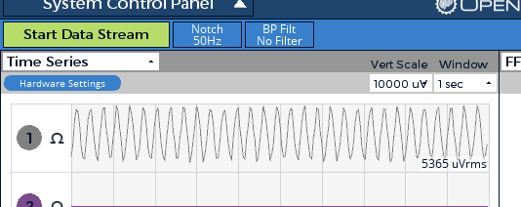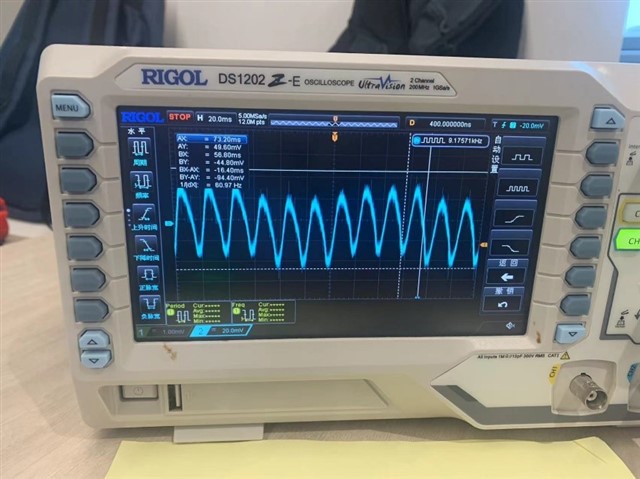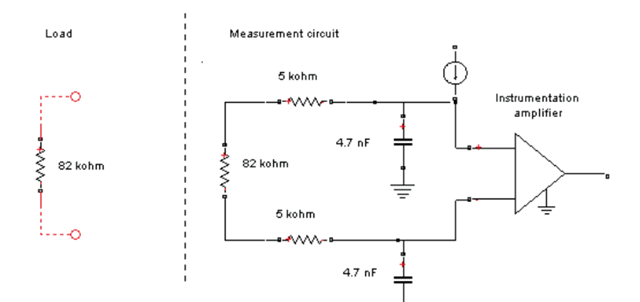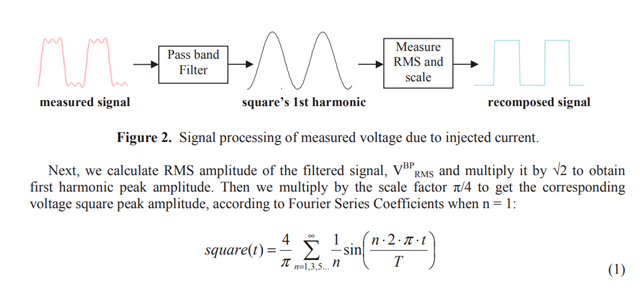Hi. I'm wondering which kind of waveform the lead-off detection signal is? Sine?square?triangular?
I can not find it in the datasheet. Does anyone know?
This thread has been locked.
If you have a related question, please click the "Ask a related question" button in the top right corner. The newly created question will be automatically linked to this question.
Hi, guohaoyue
The lead-off detection principle is described in the Datasheet 9.3.2.4.3 Lead-Off Detection section.
The basic principle is to inject an excitation current and measure the voltage to determine if the electrode is off. As shown in the lead-off detection functional block diagram in Figure 35, this circuit provides two different methods of determining the state of the patient electrode. The methods differ in the frequency content of the excitation signal. Lead-off can be selectively done on a per channel basis using the LOFF_SENSP and LOFF_SENSN registers.
There are two types of excitation signals, DC signal excitation and AC signal excitation, corresponding to DC Lead-Off detection and AC Lead-Off detection, respectively. In DC lead-off method, the lead-off excitation is with a dc signal. In AC lead-off method, an in-band ac signal is used for excitation. It can be configured via the Lead-Off Control Register (0x04h LOFF register).
See application note below for more lead-off detection theory:
Understanding Lead-Off Detection in ECG
Regards,
Amy
Hi, Amy
Thank you for your prompt response.
I am confused at the AC signal. I use lead-off detection and reading signals simultaneously ,when i have same setting but different connecting(resistance or oscilloscope),the signals was different ,so i want to know which waveform is right?
so i can use it to calculate the resistance.



Thanks
Hi guohaoyue,
I hope this reply finds you well.
这里是中文论坛,您可以使用中文。为使我们更好的沟通,我们可以使用中文交流。
when i have same setting but different connecting(resistance or oscilloscope),the signals was different ,
具体设置是什么?您具体是怎样连接 resistance or oscilloscope 的?您分别在哪里测量的上述波形?您的实际应用是要测量电阻值吗?
HI Amy
不好意思哈哈,我不知道这里是中文论坛。
1.我的寄存其设置如下,进行阻抗检测。
ads_wr(CONFIG3,0xEC);
Delay_ms(10);
ads_wr(CONFIG1,0x96);
ads_wr(CONFIG2,0xC0);
ads_wr(CH1SET,0x60);
ads_wr(CH2SET,0x60);
ads_wr(CH3SET,0x60);
ads_wr(CH4SET,0x81);
ads_wr(CH5SET,0x81);
ads_wr(CH6SET,0x81);
ads_wr(CH7SET,0x81);
ads_wr(CH8SET,0x81);
ads_wr(MISC1,0x20);
ads_wr(LOFF,0x02);
ads_wr(LOFF_SENSP,0x07);
ads_wr(LOFF_SENSN,0x00);
我打开了三个通道和SRB1进行检测,但是我只使用其中一个通道来尽心实验,我不确定我的设置是否有问题。
2.连接电阻时,我是用电极和电阻串联,接法如下

连接示波器时与电阻类似,将电极两端与示波器探头两端相连。
3.上述波形除了示波器波形,均是ADS1299芯片采集得到的波形,发送到电脑端展示的结果。
4.是的,我的实际应用是要测量电阻值,我希望弄清lead-off detecttion的电流波形(频率和电流大小我已经知道),我觉得可能会对测量阻值有帮助。
如果您有测量接触电阻的其他方法我也很想了解一下。
ps:至于为什么产生这样的疑惑,是因为我看到一篇文章中对信号进行了如下图所示的处理,我不太理解为什么要在滤波后将其重构成方波。
我的理解是,如果我在500sps采样率下,选择电流频率为fdr/4,那我只需要使用带通滤波器将125hz频段的信号提取出来除以电流大小,就得到了电阻阻值。

感谢!